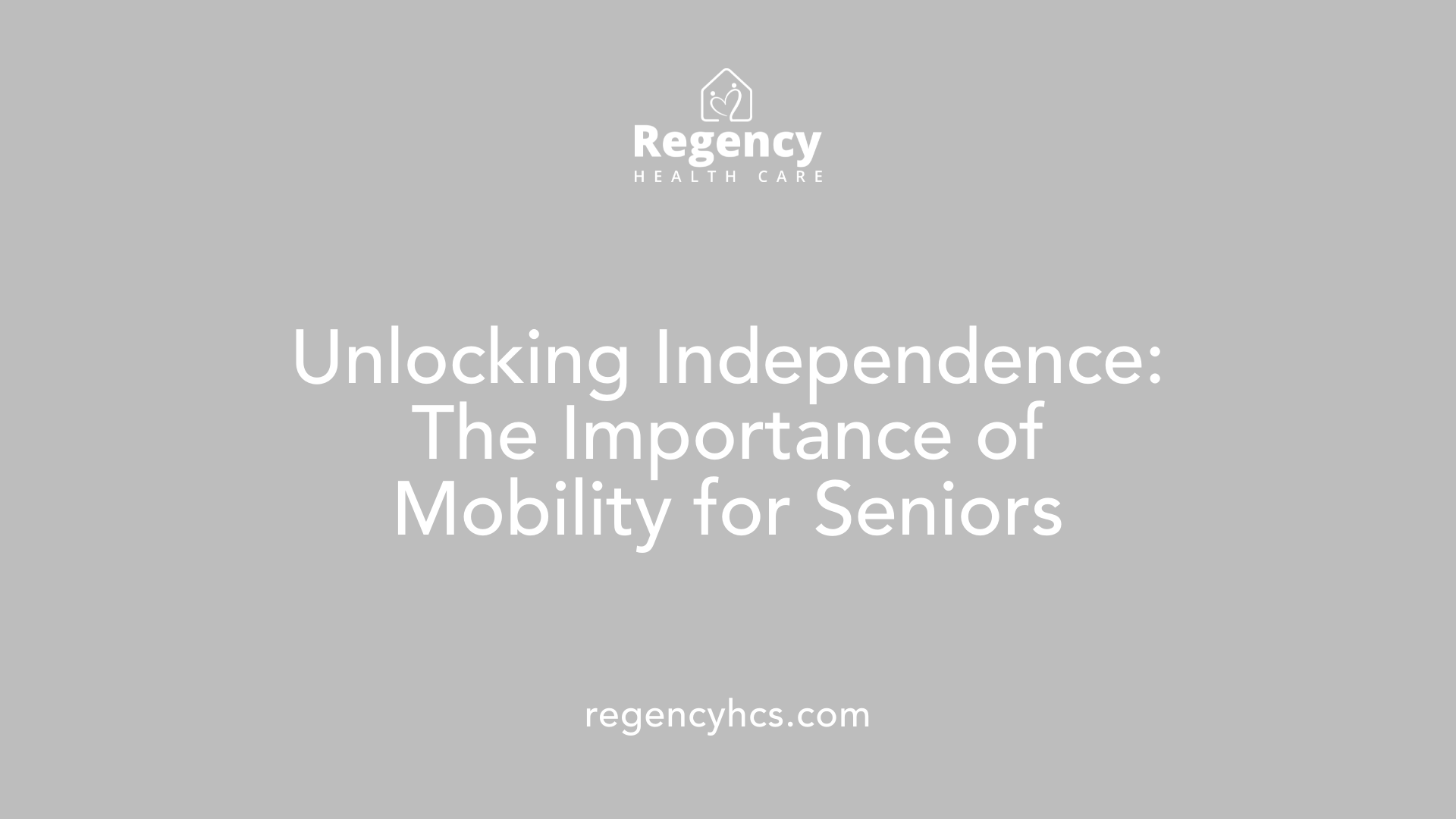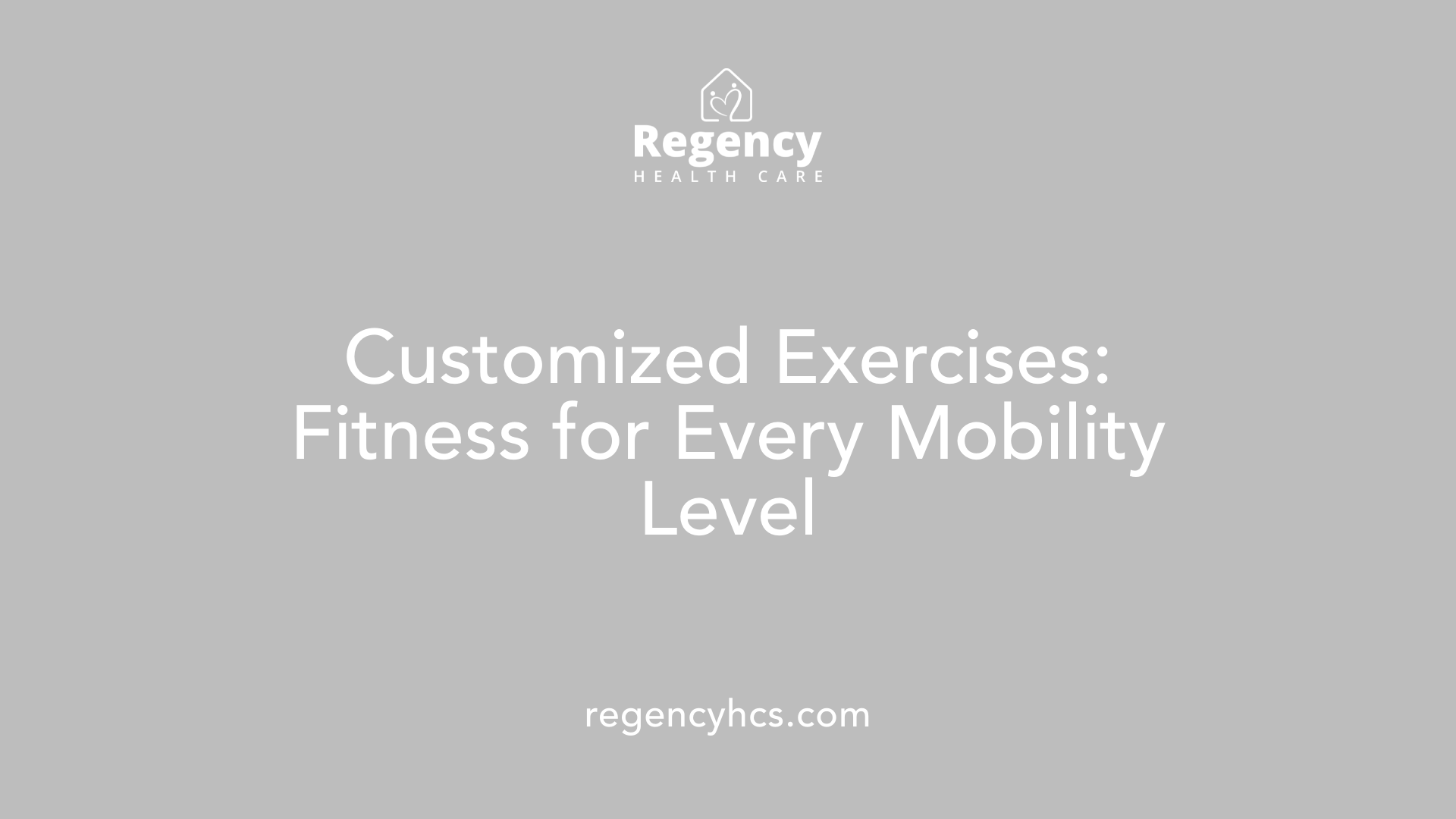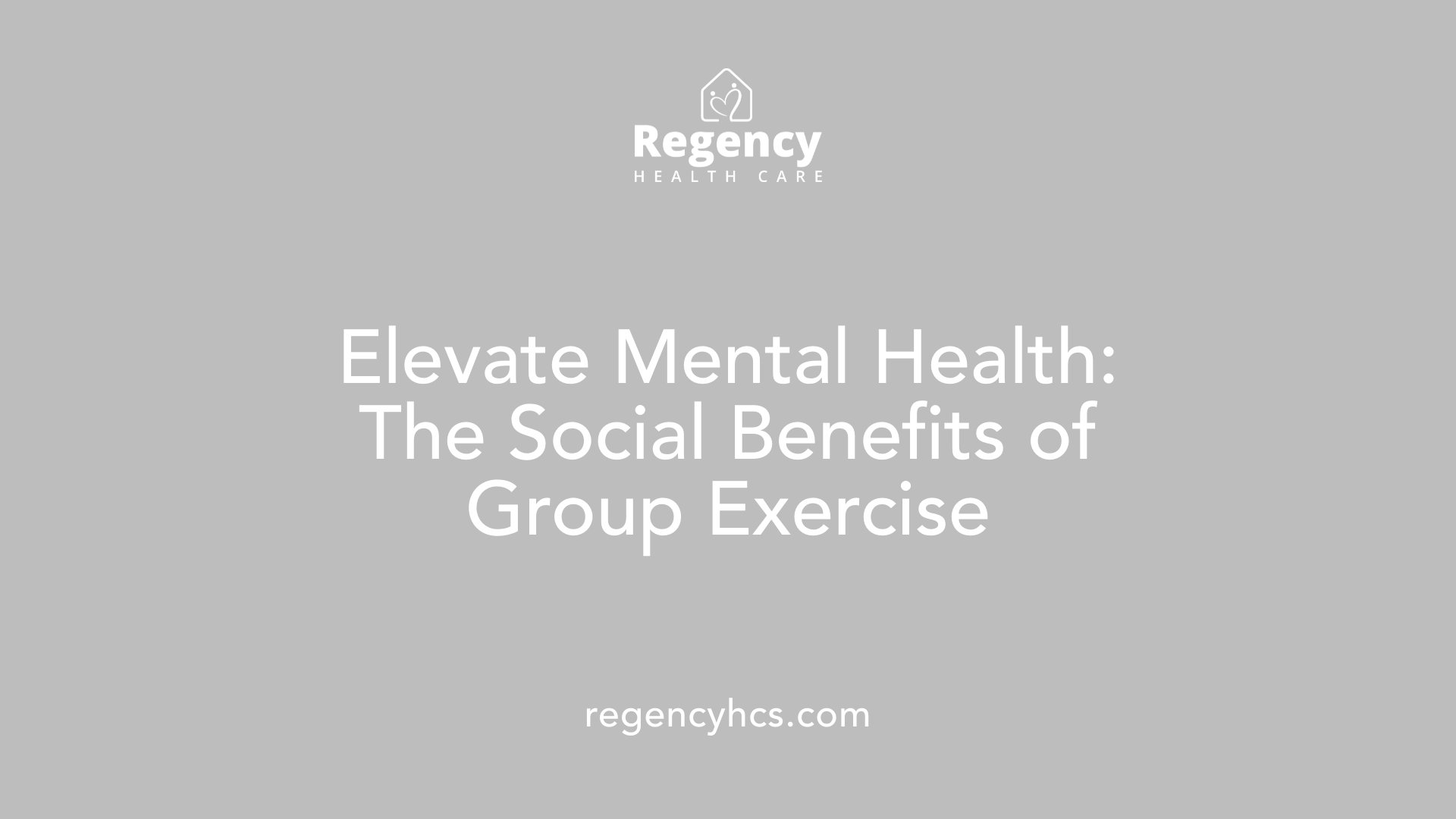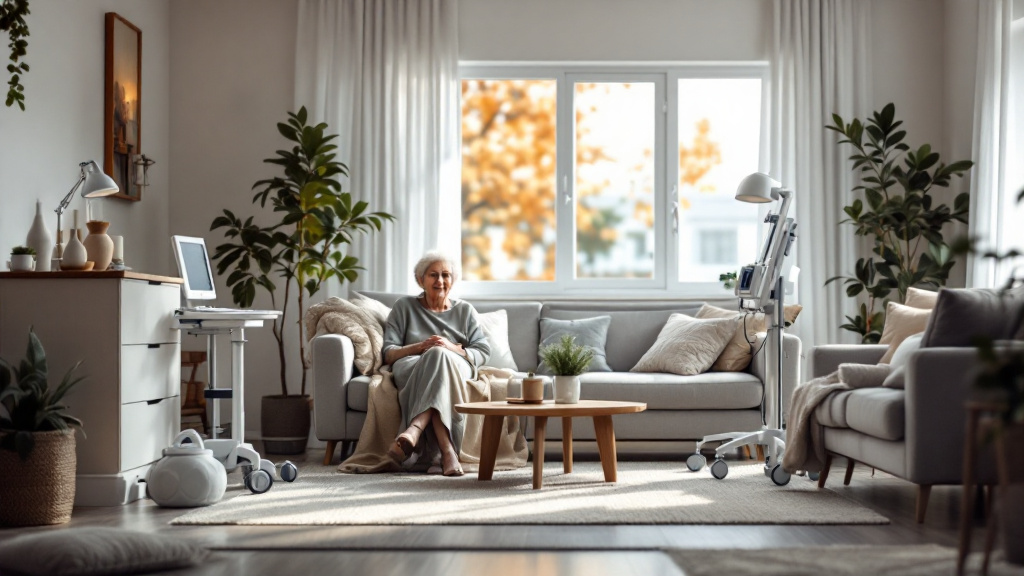Empowering Seniors with Movement
As seniors age, maintaining mobility becomes increasingly essential for leading a fulfilling and healthy life. For those with limited mobility, finding the right kind of exercise can be transformative. This article explores how exercise can significantly benefit seniors despite mobility challenges, providing guidance on safe and effective physical activities tailored to their needs.
Understanding the General Benefits of Exercise for Seniors

What are the general benefits of exercise for seniors?
Exercise for seniors provides a wide array of benefits that significantly enhance their quality of life. Regular physical activity can lead to:
Overall, seniors should aim for at least 150 minutes of moderate-intensity aerobic activity each week, along with muscle-strengthening and balance exercises, to fully realize these health benefits.
Preserving Independence Through Mobility

How does maintaining mobility affect the quality of life for the elderly?
Maintaining mobility is crucial for the quality of life of older adults, as it directly impacts their ability to live independently. Reduced mobility can lead to higher rates of disease and disability, significantly diminishing overall well-being and increasing the likelihood of hospitalizations.
Research, such as the LIFE study, illustrates that engaging in regular physical activity can prevent major mobility disabilities and reduce risks by 18%. This underscores the importance of movement in reigniting independence among seniors. Furthermore, exercise programs tailored for older adults can enhance their physical capabilities, thus contributing to autonomy in daily activities.
Programs like CAPABLE emphasize the benefits of home-based interventions focusing on personal goals, demonstrating how customized support can effectively improve mobility and function.
Ultimately, maintaining physical capabilities is essential not only for independence but also for improving life expectancy and overall health in older adults. Regular mobility activities help reduce the risk of chronic diseases such as cardiovascular disease, diabetes, and can even promote mental well-being by fostering social interactions, enhancing mood, and building a sense of community among participants.
Tailored Exercise Programs for Limited Mobility

What types of exercises are recommended for seniors with limited mobility?
For seniors with limited mobility, it’s crucial to engage in safe and effective exercise routines to maintain health and well-being. Here are some tailored options:
What are the benefits of tailored exercises?
Tailored exercise programs for seniors yield significant benefits:
Incorporating these exercises can significantly enhance physical capability and quality of life for seniors with mobility challenges, ultimately leading to a healthier, more active lifestyle.
Boosting Mental and Social Well-Being Through Exercise

Exercise's Impact on Mental Health
Regular physical activity is vital for older adults, especially those facing mobility limitations. Exercise such as walking or low-impact aerobics can significantly enhance mental well-being. When seniors engage in activities that elevate their heart rates, endorphins are released, which are natural mood lifters. A consistent workout routine can help alleviate symptoms of anxiety and depression, contributing to a better overall state of mind.
Incorporating strength training and flexibility exercises has also been shown to improve cognitive function, which can be crucial for reducing the risk of dementia. Research indicates that even moderate-intensity exercise can enhance memory and lessen the decline of cognitive abilities, vital for seniors looking to maintain their mental sharpness.
Social Benefits of Group Activities
Participating in group exercise programs can foster significant social connections, combating loneliness and isolation that many older adults experience. Engage in classes like chair yoga or aqua aerobics not only promotes physical health but also provides opportunities for seniors to connect socially.
These communal activities can create a sense of belonging and support, further enhancing individuals' emotional health. Whether it’s through shared routines in a community center or casual walking groups, these interactions contribute to improved self-esteem and overall happiness, vital for a fulfilling lifestyle in older age.
Mitigating Health Risks with Regular Physical Activity
Prevention of chronic diseases
Regular engagement in physical activity is essential for older adults to prevent chronic diseases. Exercise reduces the risk of conditions like cardiovascular disease, diabetes, and certain cancers by improving metabolic health and regulating blood pressure. Moderate aerobic activities, such as walking or swimming, are particularly beneficial as they promote cardiovascular fitness while being low-impact.
Enhancing immune function
Physical activity plays a significant role in enhancing the immune system. Moderate exercise has been linked to improved immune responses, which is crucial for seniors who often face compromised health. Activities like strength training and flexibility routines not only bolster muscle mass but also support overall health, reducing the likelihood of severe illnesses, such as acute respiratory infections.
Reducing fall risks
Falls are a leading cause of injury among seniors. Incorporating balance and strength exercises, such as tai chi or stability training, can reduce the risk by improving coordination and stability. Studies indicate that exercise can decrease falls by around 21%, emphasizing the importance of active aging. A systematic approach to physical activity helps maintain mobility, allowing seniors to live independently while minimizing injuries.
Engaging in Safe Exercises with Healthcare Guidance
Importance of Consulting Healthcare Providers
Before starting any exercise program, especially for seniors with mobility issues, it’s essential to consult a primary care provider. Healthcare professionals can evaluate an individual's physical condition and mobility limitations. They can also provide personalized recommendations tailored to optimize safety and effectiveness, which is crucial in preventing further injuries.
Ensuring Safe Exercise Practices
Engaging in exercise routines should be done with safety in mind. When selecting activities, seniors should focus on low-impact exercises that minimize joint stress, like walking, swimming, or chair-based exercises. Simple movements, such as leg lifts or arm circles, can be performed easily at home or in community centers. Furthermore, incorporating balance and flexibility exercises is vital to preventing falls.
A structured approach that includes warm-up and stretching before workouts will significantly reduce the risk of injury. Monitoring progress and adjusting activity levels can help maintain motivation and build confidence. Participating in group exercise classes can also foster social connections, enhancing overall mental well-being.
Incorporating Exercise into Daily Routines for Seniors
Strategies to Maintain Regular Physical Activity
Maintaining regular physical activity can significantly benefit seniors, especially those with mobility challenges. To encourage consistency, it is essential to create manageable workout plans that fit within their daily routines. Here are some effective strategies:
Setting Goals and Creating a Routine
Goal-setting is critical for maintaining exercise routines among seniors. Here are some tips to set achievable goals:
By integrating these strategies, seniors can foster a sustainable exercise routine, improving their mobility and overall health.
Addressing Barriers and Motivating Seniors to Stay Active

Common obstacles to physical activity
Older adults often face a variety of barriers that can hinder their ability to engage in regular physical activity. These may include:
Motivational strategies
To encourage seniors to participate in physical activity, various strategies can be employed:
A Path to Empowerment and Health
Exercise for seniors with limited mobility is more than just moving; it's a gateway to a healthier, more independent life. By adopting appropriate exercises and seeking guidance from healthcare professionals, seniors can overcome physical barriers and enjoy improved health and social connections, leading to a better quality of life.
References

Creating Personalized Care Plans for Private Pay Clients
December 27, 2024
Customizing Care for Optimal Patient Outcomes in Private Pay Models

Tailored Solutions in Concierge Home Care
December 27, 2024
Exploring the Revolution in Home-Based Senior Care

HHA Scheduling Tips
December 27, 2024
Mastering Home Health Scheduling for Optimal Patient Care

Coping with Dementia and Alzheimer's in Home Care
December 27, 2024
Navigating Home Care for Dementia and Alzheimer's: Strategies and Support

Exclusive Health Clubs and Spas in Celebrity Home Care
December 27, 2024
Luxury and Privacy: Inside Celebrity Wellness Havens

Tailored Estate Management Solutions in High Net Worth Home Care
December 27, 2024
Crafting Customized Estate Management for High Net Worth Individuals



